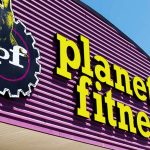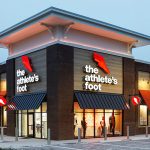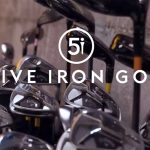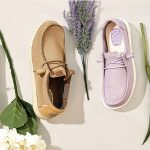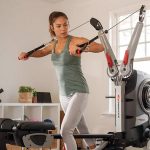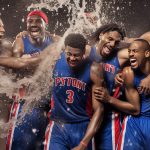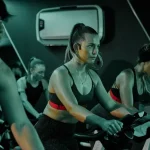Despite numerous hurdles, about a dozen new brands are either in the midst of launching their first running shoes or setting up major initiatives to get into U.S. running specialty. The launches come as a recessionary climate makes buyers across retail nervous about stocking anything unproven. The new arrivals are also competing in a category with well-entrenched brands and attempting to convert many runners, already extremely loyal to their favorite brands, to a new entity.
But each of the newcomers feel they have a unique story backed by strong technology that will resonate with runners and allow their brands an entrance into the relatively healthy running space. Moreover, some of the old guard is slipping and change is always good, they say. Some suggest that the current economy is good for running.
“The economy plays well because every single downturn in the economy -whether its the early 70s or early 90s or right now – usually coincides with an upswing in people running,” says Chris Brewer, Under Armours director of product creation, running and training. “So we had the first running boom and then the second and were kind of bullish on there being a third running boom.”
PSR profiles some of the major launches into run specialty.
MERRELL
In 2005, Merrell introduced trail running shoes and in June 2008 moved into road running. Gregg Duffy, product line director for running at Merrell with over 12 years of running expertise at companies including Puma and Saucony, said Merrell didnt attempt to reinvent the wheel in venturing into road running. First, the team developing the line didnt expect to come up with a new running technology to beat those built over decades by the likes of Asics, Saucony and Mizuno. The team also intentionally put out a running shoe that looked like a running shoe.
“Our approach was that if we were going to go after the road running side, we cant be too goofy,” says Duffy. “The runner definitely has an expectation of what my shoe should look like and how it should perform and anything that deviates too far from the norm is looked at skeptically.”
What Merrell did bring to its road running shoe was many of its outdoor technologies, such as climate control, moisture management and anti-fungal properties.
“We took a very subtle approach to our launch,” says Duffy. “There are a lot of great outdoor technologies that the running side hasnt embraced or had any experience with. So, we wanted to [create] a package that used proprietary and outdoor-tested technologies that weve been using for years and years that are very relevant to their world of athletics, but its not in their DNA to use that part of it.”
Although the well-known appeals to a broad range of consumers, Duffy said the one distinct customer that Merrell might definitely appeal to is the hard-core outdoor adventurer.
“We appeal to the customer that is willing to get wet, cold and dirty,” says Duffy. “And there are a group of runners who love it when its freezing cold and blistering [hot] out there.”
Merrell decided to get into road running after making a smooth transition into trail and recognizing that its performance heritage and its overall name brand recognition gave the brand permission to tackle the broader running market.
“Were a credible brand,” says Duffy. “Ive worked for a few brands and you cant buy a name. Its hard to readdress what consumers think of your brand, especially one thats linked to performance.”
K-SWISS
K-Swiss hopes to win the running crowd with the launch of miSOUL in February. With its interchangeable midsoles, or miSOULS, the Run 1 miSOUL is the only running shoe that can instantly and easily change from a neutral cushioned shoe to a lightweight race/trainer to a stability shoe in a matter of seconds.
“Every brand needs a unique selling proposition to compete,” says David Bond, the VP of product for K-Swiss. “Nike has AIR, Asics has GEL, and New Balance has widths to make them unique. With miSOUL technology K-Swiss has customization. We feel that customization can make our running shoes more desirable than any other brands shoes.”
The shoe also allows a runner to address stability issues on one foot without affecting the other foot. Previously, only an expensive orthotic would solve the problem.
“The runner would simply need to put the STABILITY miSOUL in the foot that needs the correction and leave the CUSHIONING miSOUL in the other shoe,” says Bond. Bond notes that miSOUL also prolongs the “ride life” of the shoe due to its interchangeable midsoles.
K-Swiss has brought on an experienced team to champion its running initiative. This team includes Bond, who previously worked on running projects while at Nike and Adidas. Its director of running, Mark Sheehan, has created running products for Nike, Reebok and Puma.
“Our brands heritage is in simple and real performance innovation in tennis,” asserts Bond.
“Every runner is looking for an edge,”adds Bond. “Every runner wants to feel better while running. There is still a long way to go in perfecting the feel and ride of running shoes and were looking forward to pushing the industry forward.”
UNDER ARMOUR
By far the most talked about launch, Under Armour is just hoping to get a portion of their apparel fans into their shoes. Backed by a comprehensive “Athletes Run” campaign, the collection launches on January 31. Two new technologies the Foot Sleeve and Cartilage were developed around the effort. The Foot Sleeve wraps around the foot from the inside of the sneaker to provide for a better fit while incorporating Under Armours apparel technologies to keep the foot dry and at a moderate temperature. The Cartilage system is made of a soft silicon and gel mix that provides the “connective tissue” between the foot and the ground for a more responsive ride. Beyond the sole and inner, each of Under Armours running sneakers features a lightweight, breathable mesh upper.
While it expects the technology story to ultimately drive its success in running, Under Armour expects its powerful brand name is already helping it land coveted spots in running shops.
“Because of who we are and our broader reach, were gong to be able to get on shelves faster than [other brands] might because of what were able to do with sports marketing and brand marketing,” states Brewer.
For running shops, the brand promises to help reach a younger customer than typically comes into the stores. Brewer also expects Under Armour to benefit from its mass-approach to the launch. He notes that most brands target the elite athlete first with a goal of having the brand “trickle down to the masses” in time. By comparison, Under Armour is aiming for a much wider audience in hopes of driving a bigger opportunity across the category.
KARHU
KARHU, the Finish running brand, just launched its first collection for spring under new ownership. Born in 1916, KARHU (meaning “bear” in Finnish) was the inventor of the first removable spike and from the 20s through the 80s, many of Europes early track and field stars wore KARHU. It remains a top-tier running brand throughout Europe.
In June 2008, two footwear veterans – Huub Valkenburg and Jay Duke – acquired the KARHU trademark and patents in hopes of capitalizing on the brands running and outdoor history.
“KARHU is the last of the truly authentic running brands to be brought to the U.S. from Europe,” says Duke, president.
The new Spring 2009 models in the Stability and Neutral categories promote a Natural Ride and Feel for all running types. Inspired by Finnish design, the shoes also feature the patented Fulcrum technology that promotes the foots natural abilities in three fluid movements through the phases of the gait cycle. This Fulcrum-enhanced transition reduces wasteful vertical forces and promotes an efficient gait cycle creating the Natural Ride feel.
“KARHU has always promoted the foots natural abilities and our technology focuses on horizontal efficiency compared to the industry focus on vertical cushioning,” says Huub Valkenberg, KARHU CEO. “This is what European runners seek in KARHUs – a focus on the more natural work of the foot and stride of the runner.”
KARHU expects to benefit from its extensive connections in the run specialty channel, including the fact that Valkenburg has pioneered the Swedish performance apparel brand, Craft, in North America since 2000. Another selling point is that the brand is solely focused on run specialty.
“The specialty run dealer gets to provide an authentic, dedicated and unique running story that their consumer cannot get when he or she drives to the Foot Locker, Dicks Sporting Goods or Sports Authority,” says Duke. “They bring out our product and look smart, provide differentiation, see a higher ASP, given less price competition from the malls. [This pattern] increases their sell-through and [drives] repeat business based on our commitment to them.”
AHNU
Ahnu, which is heading into the trail running category this spring, was founded in Spring 2007 with the goal of creating QuiteLight, high performance shoes for any outdoor environment. Their initial success was fueled by a strong social responsibility stance and a unique commitment to the outdoors and to conservation/environmental causes. With its outdoor credentials quickly established, trail running became a natural extension.
“Our product team has extensive experience in biomechanics, technical product design and further running/coaching that has put us in touch with thousands of runners on a one-to-one basis,” says Jim Van Dine, president. “Two members of our team started with several years working in specialty running stores. So it makes sense for Ahnu to pursue trail running.”
In its approach to trail running, Ahnu is focusing on fast hiking, an increasingly popular trail activity often combined with running.
Says Van Dine, “The biomechanical demands on the foot are similar in both fast hiking and running, so the footwear need goes beyond hardcore trail runners and extends to hikers as well.”
Van Dine says with the unevenness of off-road surfaces (trail, gravel, grass, dirt, sand
), a trail running shoe requires heel stability for both medial and lateral sides of the shoe. With many shoes typically offering single density mid-soles or mid-soles with high density EVA on the medial sides, trail runners are not getting the proper support. By comparison, Ahnu Neutral Positioning System provides such support and combines with triple density mid-sole material that helps to center the foot throughout the foot strike to provide stability on any surface with excellent shock absorption, traction and durability as well.
ECCO
Founded in 1963, the Denmark comfort and outdoor brand has competed in the running category since it launched ECCO Performance, initially branded as Receptor by ECCO, in 1999. But now, the brand is making a making a major push into run specialty with the launch this March of its BIOM collection. One core reason ECCO is moving into run specialty is that running is the foundation for training in all sports.
“If you are to be considered an authentic athletic brand, you need to offer serious running product,” says Dan Legor, senior marketing manager, ECCO USA. “The second reason is that we knew that ECCO could make a difference in the category by applying 45 years of shoe and last making expertise to the running world.”
Developed in conjunction with biomechanics expert Dr. Peter Bruggeman and world Triathlon champion Torbjørn Sindballe, BIOM allows the foot and the bodys supporting structure to move in its most natural way.
“The basic premise is that the foot should lead the shoe and not the other way around,” says Legor. He noted that the reaction from running shops has been “incredibly positive,” with orders coming from Lukes Locker, Maine Running Company and Naperville Running, among others.
“We know that the success of ECCO in the running category will not come easy or overnight,” adds Legor. “New products must have a strong shelf appeal, but also need to be relevant to what consumers and retailers are looking for and to consistently deliver on their promise. We believe ECCO and BIOM are well prepared to do deliver both.”
MBT
MBT (Masai Barefoot Technology) are not designed as a running shoe, but are used as a walking shoe and post-workout shoe, as well as a casual/comfort shoe. The shoe was invented by Swiss engineer Karl Müller in Korea when he noticed that walking barefoot over paddy fields alleviated back pain. Simulating walking on such a soft surface, Müller created the MBT shoe line with a rounded, curved sole to force the wearer to balance themselves like the members of Masai.
This balancing act turned out to be good for strengthening core muscles and promoting good posture. Successfully launched in Europe in 1996, it was introduced to the U.S. in 2003 and entered run specialty last year.
Rebecca Kotch, MBTs VP of marketing & retail development, says many runners come into running stores looking for shoes to alleviate foot, knee, hip and back pain. The problem is the repeated shock and compression that running presents makes it difficult to overcome these aches and injuries while running – even with the best possible running shoe choice.
“By wearing the MBT, and experiencing the balancing action within the footwear, the runner will build the stability muscles that will protect joints and help heal injuries,” says Kotch. “With ones weight distributed evenly across the entire sole of the foot, the runner is also benefiting from increased circulation. The above benefits make MBT the perfect lifestyle and recovery shoe for the running customer.”
Kotch adds, “When the run specialty stores take the time to learn about MBT, they understand completely how MBT fits in to their mission. By providing MBT, the store is taking care of their customer by providing lifestyle footwear that will help their customer in their quest to stay healthy and active and pain-free.”
END
Founded by ex-Nike shoe designer Andrew Estey and his business partner Ben Finklea in 2007, END is best known for its eco-credibility. The first collection of trail training and light backpacking footwear that launched in Fall 2008 was 35-59 percent more sustainable than Outside Magazines Top Picks for 2007. Spring 2009 marks the brands launch into road running.
END questions each design, material and manufacturing process to ensure everything it makes is sustainable. This often involves looking at “whats been just marketing fluff thats been touted over the last 10 to 15 years as a real feature, but it isnt really helping the athlete.” For instance, the End removes the liner in the sole of the shoe because the brands designers felt the liner was unnecessary.
“Sock technology has come so far that you dont want anything between the sock and outsole of shoe,” says Finklea. “You want to be able to whisk moisture right away.”
“We have to compete against the Sauconies, Mizunos, Brooks and Nikes of the world, so it has to meet those expectations for performance, durability and comfort,” says Finklea.
Besides the attractive price point and high performance standards, END is also gaining a reputation for its lightweight shoes; all models are now under 10 ounces. But END will likely be best known for its green credentials. Although that eco-message clearly works better in outdoor specialty, Finklea expects that message will increasingly resonate with runners as well.
“Footwear production is a dirty, polluting process and runners burn through three or four pairs a year,” said Finklea. “So, part of our job is educating individuals about what goes into the manufacturing of a shoe, and part of our messaging is really focusing on the 20-something consumer thats really grown up around sustainability. Theyve been hearing about conservation since kindergarten and in many ways educating their moms and dads about it. So theyll be getting the message out about why things need to change.”


